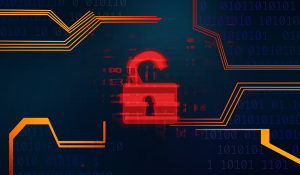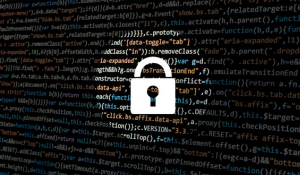15 different types of cyberattacks
In this relentless digital battlefield, businesses and organizations are pitted against a multitude of adversaries ranging from individual hackers...
6 min read
 DriveLock
Aug 8, 2023 11:41:49 AM
DriveLock
Aug 8, 2023 11:41:49 AM

In today's rapidly evolving digital landscape, the menace of cyber threats looms larger than ever, with one particularly notorious adversary leading the pack: the ransomware attack. The pervasive and disruptive nature of ransomware attacks has turned them into a focal point of concern for individuals, businesses, and organizations worldwide.
| TABLE OF CONTENT |
In this blog post, we will delve into the intricate world of ransomware attacks, exploring their methods, impact, and most importantly, effective strategies to safeguard against these digital extortion schemes.
First, we have to explain what is a ransomware. Ransomware is a type of malicious software (malware) which is designed to encrypt a victim's files or lock them out of their computer system until a ransom is paid. It is a form of cyber extortion, where cybercriminals demand payment from the victim in exchange for restoring access to their data or system.
It targets computer systems, networks, or individuals with the intent of encrypting their data or blocking access to it. The attackers typically gain unauthorized access to the victim's system through phishing emails, malicious downloads, or exploiting vulnerabilities in software.
Once inside, the ransomware program encrypts the victim's files, rendering them inaccessible or unreadable, and displays a ransom message demanding payment in exchange for the decryption key. The attackers often demand payment in cryptocurrencies, such as Bitcoin, to maintain their anonymity. If the victim refuses to pay or fails to meet the attackers' demands, their data may be permanently deleted or leaked.
Ransomware attacks can have severe consequences such as: causing financial losses, operational disruptions, and compromising sensitive information. Prevention measures such as regular data backups, robust cybersecurity practices, and keeping software up to date are crucial in mitigating the risk of ransomware attacks.
Ransomware comes in various forms, and cybercriminals continuously develop new variants to evade detection and improve their malicious capabilities.
Find out more about different cyberattacks:
One of the earliest and most notorious ransomware strains, CryptoLocker typically spreads through email attachments and malicious links. It encrypts files on the victim's computer and demands a ransom to decrypt them.
This ransomware gained worldwide attention in 2017 due to its rapid spread and high-profile targets, including healthcare institutions and government agencies. WannaCry exploits a vulnerability in the Windows operating system and uses a worm-like mechanism to infect other computers on the same network.
Locky is distributed through phishing emails containing infected Microsoft Office documents. Once opened, it encrypts files and appends them with a ".locky" extension, demanding payment in Bitcoin for decryption.
Petya and its derivative, NotPetya, are unique ransomware that encrypts the Master Boot Record (MBR) of the victim's system, making it unbootable. It spreads through infected software updates and also by exploiting the same vulnerability as WannaCry.
Ryuk is a targeted ransomware that primarily targets organizations and businesses, demanding high ransom payments. It often comes after an initial infection with Emotet or TrickBot, which help facilitate its distribution.
GandCrab was one of the most prevalent ransomware families before its operators retired in 2019. It was sold as a ransomware-as-a-service (RaaS) model, allowing other cybercriminals to use it for a share of the profits.
Maze is known for its double-extortion technique. In addition to encrypting files, it exfiltrates sensitive data from the victim's system, threatening to publish it if the ransom is not paid.
REvil, also known as Sodinokibi, is another ransomware-as-a-service operation that emerged around 2019. It is commonly distributed through exploit kits and phishing campaigns.
DoppelPaymer ransomware targets large enterprises and corporations. It uses sophisticated encryption methods and often threatens to leak sensitive data if the ransom is not paid.
Conti is a variant of Ryuk ransomware. It is designed to attack and extort money from corporate networks, often demanding large sums for decryption.
1. Delivery:
2. Payload Execution:
Once the initial infection vector is successful, the ransomware's payload is executed on the victim's system. This payload could be a standalone executable file or a script embedded within another file.
3. Establishing Persistence:
The ransomware may attempt to establish persistence on the infected system, ensuring it can continue to operate even after a reboot or attempted removal. This may involve modifying system settings, creating new startup entries, or installing rootkit-like components.
4. Encryption:
After gaining a foothold on the victim's system, the ransomware starts encrypting files using strong encryption algorithms. It often targets common file types, such as documents, images, videos, databases, and more. The encryption process renders the files inaccessible to the victim without the decryption key.
5. Ransom Note:
Once the encryption is complete, the ransomware typically leaves a ransom note on the victim's computer or displays it on the screen. This note informs the victim that their files are encrypted and provides instructions on how to pay the ransom to obtain the decryption key. The note may also include threats of data deletion or increased ransom amounts if the payment deadline is not met.
6. Ransom Payment:
The attackers usually demand payment in cryptocurrencies, such as Bitcoin, to make it more difficult to trace the transaction back to them. Victims are instructed on how to purchase the required amount of cryptocurrency and send it to a specific address controlled by the attackers.
7. Decryption (Possibly):
In some cases, if the victim complies with the ransom demand, the attackers may send the decryption key or tool to unlock the encrypted files. However, there's no guarantee that paying the ransom will result in the recovery of the files, as some attackers may not provide the decryption key or may provide a faulty one.
Here you will find out how to prevent ransomware attack are that private users and businesses can take to protect themselves against ransomware attacks:
Ransomware remains a persistent and evolving threat that continues to wreak havoc on individuals, businesses, and organizations worldwide. The ever-increasing sophistication of ransomware strains, coupled with the rise of Ransomware-as-a-Service (RaaS), demands a proactive and multi-layered approach to cybersecurity. Protecting against ransomware requires regular software updates, strong security measures, and user awareness to identify and avoid phishing attempts.
Additionally, maintaining secure and frequent data backups is crucial to ensure resilience against ransomware attacks. By staying vigilant, well-informed, and implementing robust cybersecurity practices, we can better defend ourselves and our digital assets against the menace of ransomware. Remember, prevention and preparedness are our best weapons in the battle against ransomware's malicious grip.

In this relentless digital battlefield, businesses and organizations are pitted against a multitude of adversaries ranging from individual hackers...

Among the numerous cyber threats lurking on the horizon, phishing attacks have emerged as a formidable adversary. Like a stealthy predator, these...

In the vast landscape of cybersecurity threats, few adversaries have proven as cunning and adaptable as the Trojan horse virus. Like its namesake...